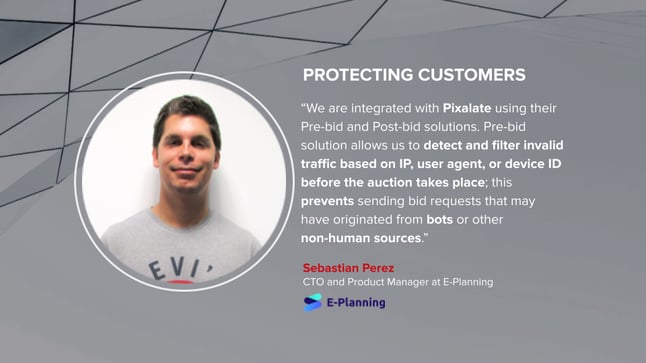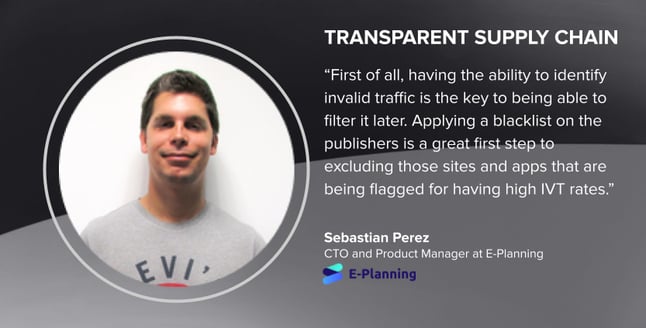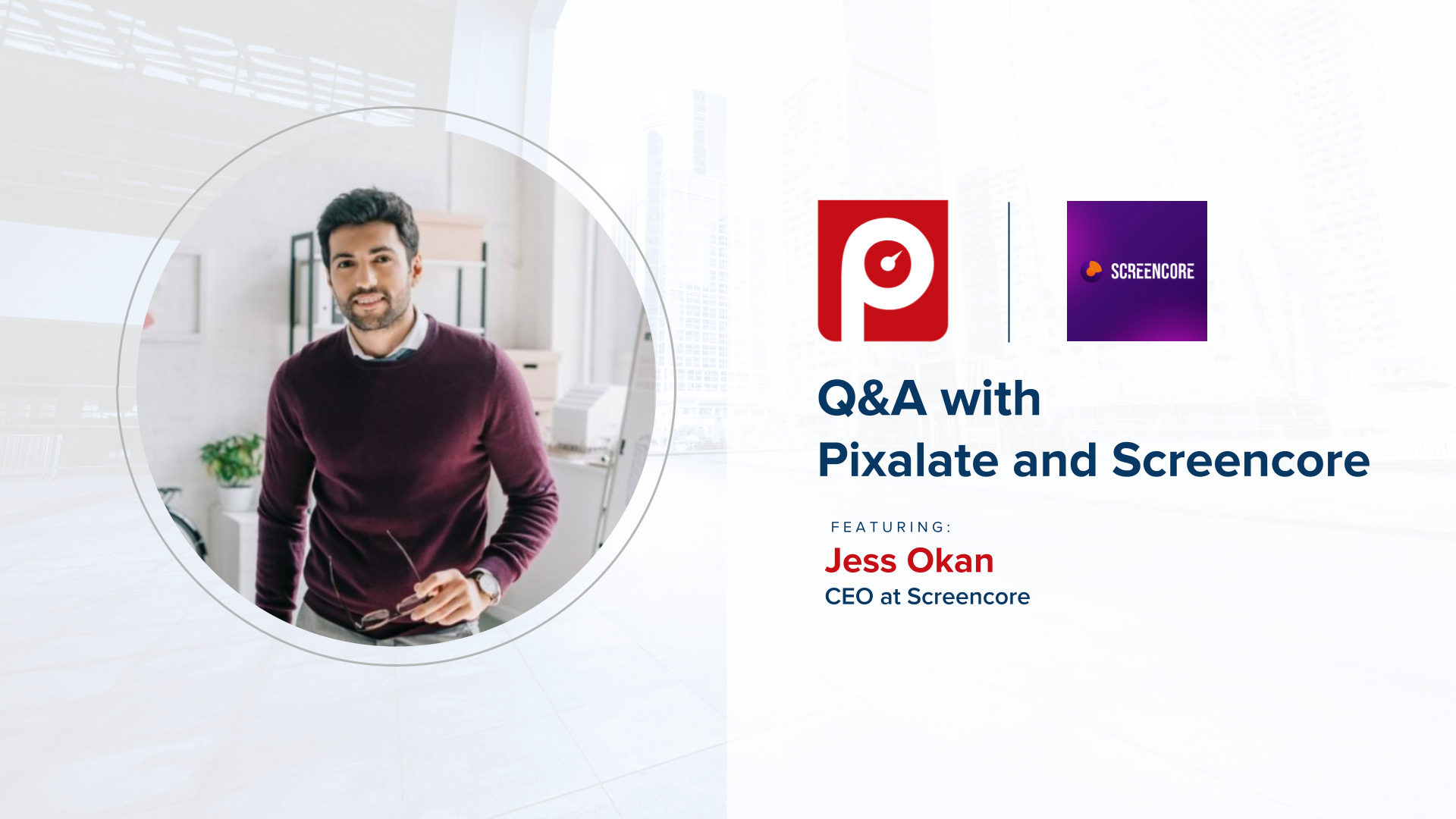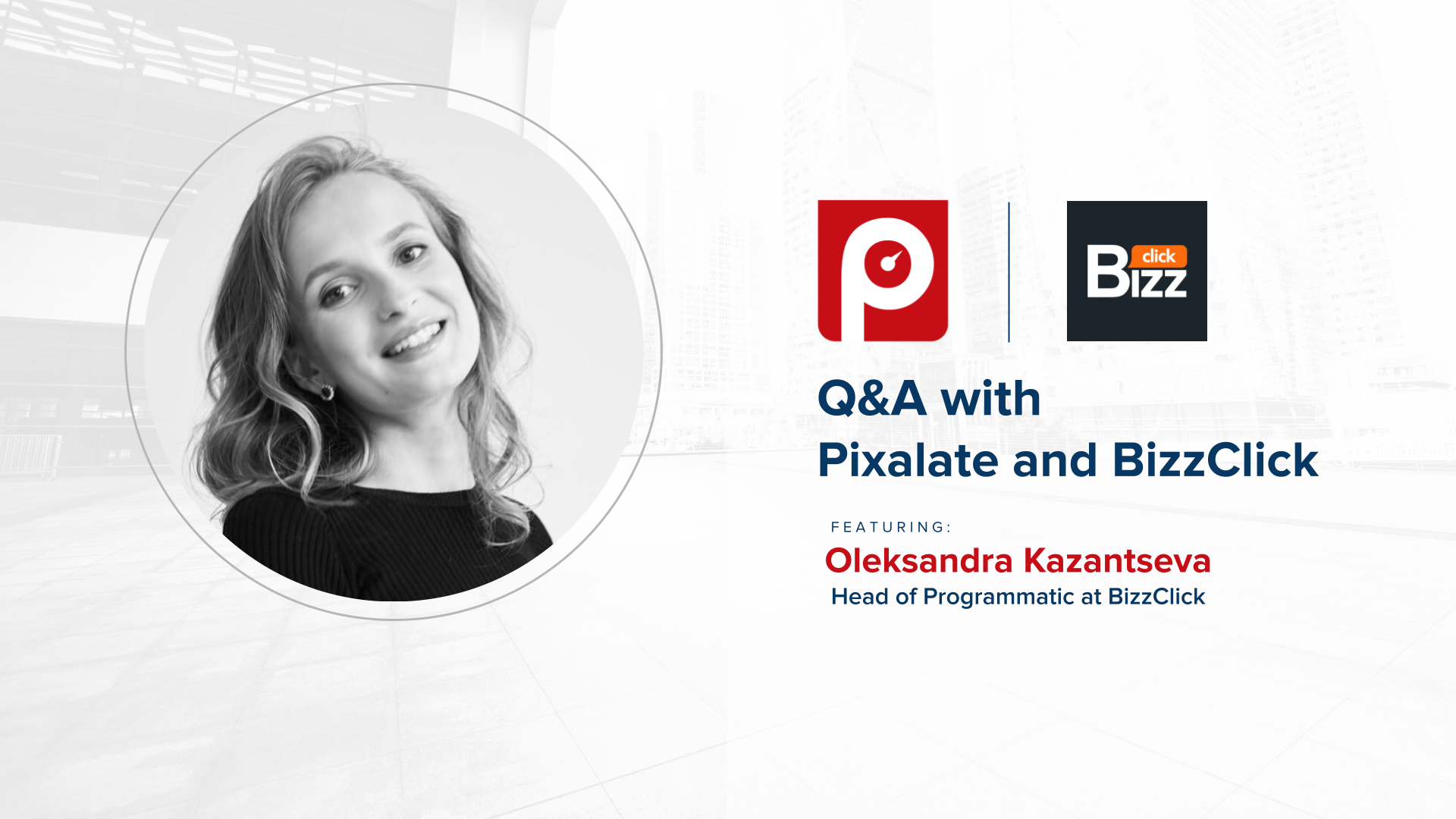
Pixalate spoke with Sebastian Perez, CTO and Product Manager in E-Planning, about combating ad fraud and securing transparency in the programmatic ad supply chain.
About Sebastian Perez:
Current CTO and Product Manager in E-Planning, working in the company for more than 10 years. Responsible for all internal developments, product roadmap, integrations, and certifications, among others.
See the full Q&A below:
Pixalate: What services does E-Planning offer?
Sebastian Perez: E-Planning is one of the leading programmatic advertising companies.
We offer SSP and programmatic services developed with in-house technologies. We have integrated more than 13.500 tier 1 sites, 700 million unique users, more than 250B monthly impressions, and over 2500 apps from the US, EMEA, LATAM, APAC, and the rest of the world. We also have our proprietary Exchange which is integrated using server-to-server connections to other SSPs and direct demand from DSPs such as DV360, Mediamath, Centro, TTD, and our very own DSP.
Pixalate: How does E-Planning protect its customers from invalid traffic (IVT) and ad fraud?
Sebastian Perez: We are integrated with Pixalate using their Pre-bid and Post-bid solutions. Pre-bid solution allows us to detect and filter invalid traffic based on IP, user agent, or device ID before the auction takes place; this prevents sending bid requests that may have originated from bots or other non-human sources. On the other hand, the Post-Bid solution provides an analytic tool that helps us to identify and take action preemptively against more sophisticated invalid traffic.
This year we got certified by the TAG Anti-Fraud program. It was a great experience and helped us big to improve our IVT filtering stack by adding new tools and applying good practices.

Pixalate: What are the key steps to secure a transparent programmatic digital ad supply chain?
Sebastian Perez: First of all, having the ability to identify invalid traffic is the key to being able to filter it later. Applying a blacklist on the publishers is a great first step to excluding those sites and apps that are being flagged for having high IVT rates. Then applying filters based on user/device to filter those requests that may be originated from non-human sources. And finally, at the same time, we monitor all the traffic using an analytics tool, which is the only way to detect sophisticated invalid traffic (SIVT) that cannot be filtered only based on publishers and basic device information such as IP or Device ID.
Pixalate: How does E-Planning provide access to granularly-targeted audiences without invalid traffic?
Sebastian Perez: Applying Pre-Bid and Post-Bid tools and integrating them into our system. There is no manual work on our end to apply a Pre-Bid blacklist, our platform just downloads it twice a day and updates all IPs, device IDs, sites, and apps list, and excludes them from any auction automatically. In consequence, we can filter out all the invalid traffic before the auction takes place. Then using Post-Bid tools help us to monitor sophisticated invalid traffic, get insights and work side by side with the publishers to remove the invalid traffic.
Pixalate: What are the key differences between platforms in delivering a quality inventory to advertisers?
Sebastian Perez: There is a part of the ad tech industry that is based on fraud, as happens with some other industries as well. Therefore it is so important to work only with partners that apply tools and good practices to filter IVT, check the publisher's reputation, and favor working with certified companies in anti-fraud programs, such as TAG Anti-Fraud. It is up to each party involved in the supply chain to apply best practices to ensure that advertisers' campaigns will be shown in a curated inventory, free of fraud. When advertisers run their campaigns in low-quality inventory, they are scammed twice. First, because they are probably paying for non-human traffic, and second because their metrics will be dissociated, and will be hard to understand how effective their campaigns are in reality.
Pixalate: Which trends, policies, and initiatives do you consider as possibly the most influential on the future of programmatic advertising?
Sebastian Perez: Advertisers will choose to work with partners that follow widely adopted standards by the industry such as ads.txt, app-ads.txt, sellers.json, and Supply Chain. Also, advertisers will privilege those who are certified in anti-fraud programs, which are being audited by third-party validators, who may check from an independent perspective that all good practices regarding IVT prevention are being applied. That is the only way they can ensure that their campaigns will be shown correctly to their target audiences.








